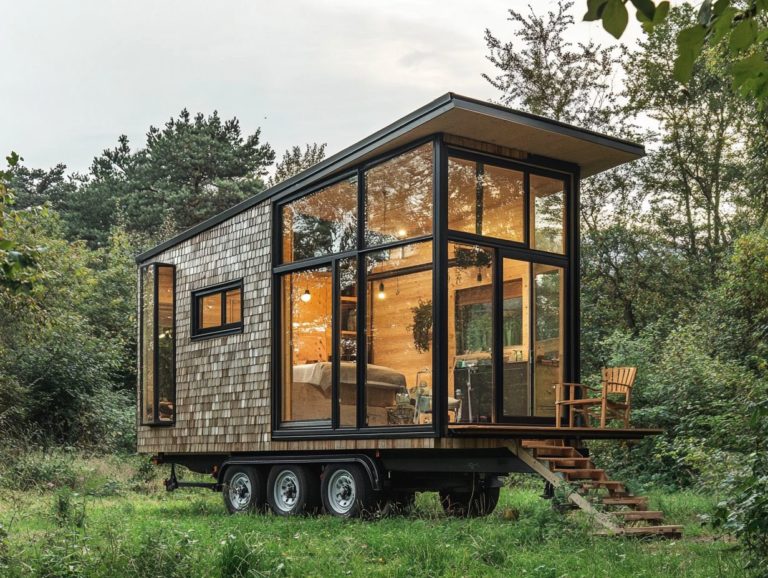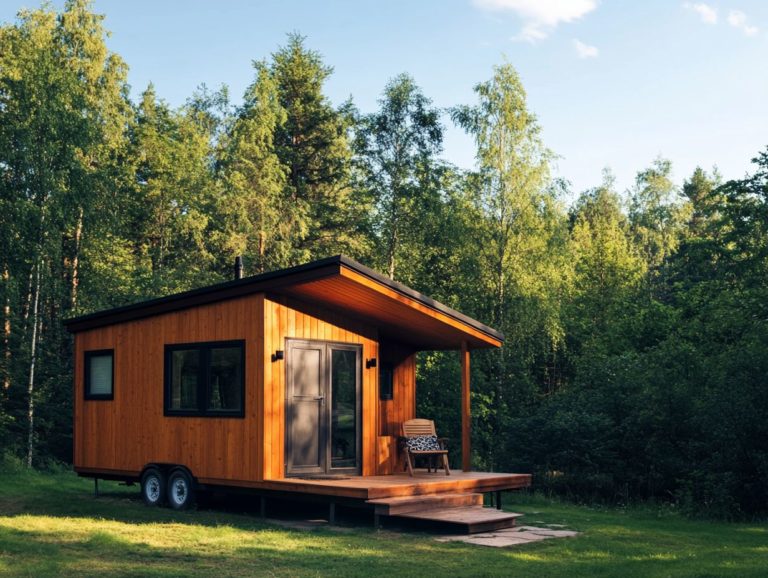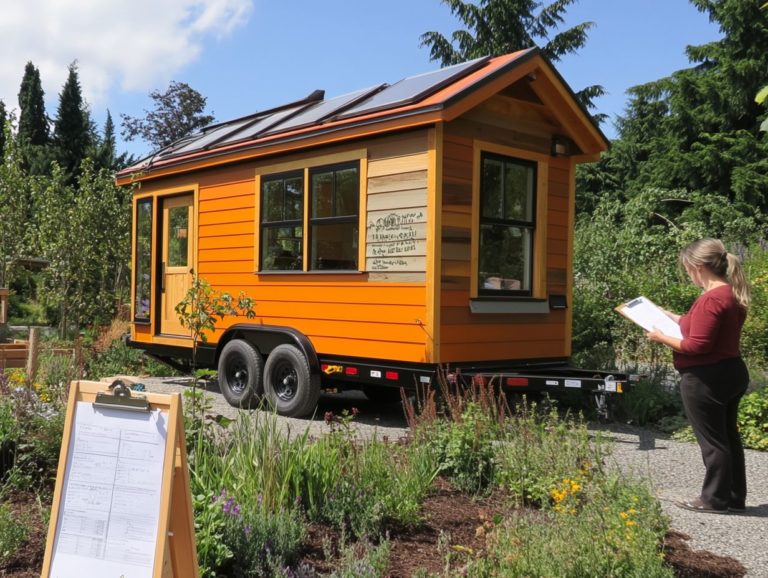Permitting Process for Tiny House Communities
Tiny house communities are rapidly emerging and transforming the housing landscape for those grappling with housing affordability and sustainability.
These vibrant, close-knit neighborhoods present an enticing alternative lifestyle that resonates with many individuals.
However, navigating the permitting process can pose challenges. This article offers a comprehensive overview of tiny house communities, illuminating their numerous benefits, the intricacies of zoning laws rules that govern how land can be used and the crucial permits needed for success.
You’ll also find a discussion of common roadblocks, paired with valuable tips to help you smoothly navigate the journey to your tiny home.
Contents [hide]
- Key Takeaways:
- Overview of Tiny House Communities
- Benefits of Living in a Tiny House Community
- Permitting Process for Tiny House Communities
- Challenges and Roadblocks in the Permitting Process
- Tips for a Successful Permitting Process
- Frequently Asked Questions
- Curious about the permitting process for tiny house communities?
- What permits are typically required for a tiny house community?
- Are there any specific regulations for tiny house communities?
- What is the timeline for obtaining permits for a tiny house community?
- Can I build a tiny house community on any type of land?
- Do I need to hire a professional to assist with the permitting process?
Key Takeaways:
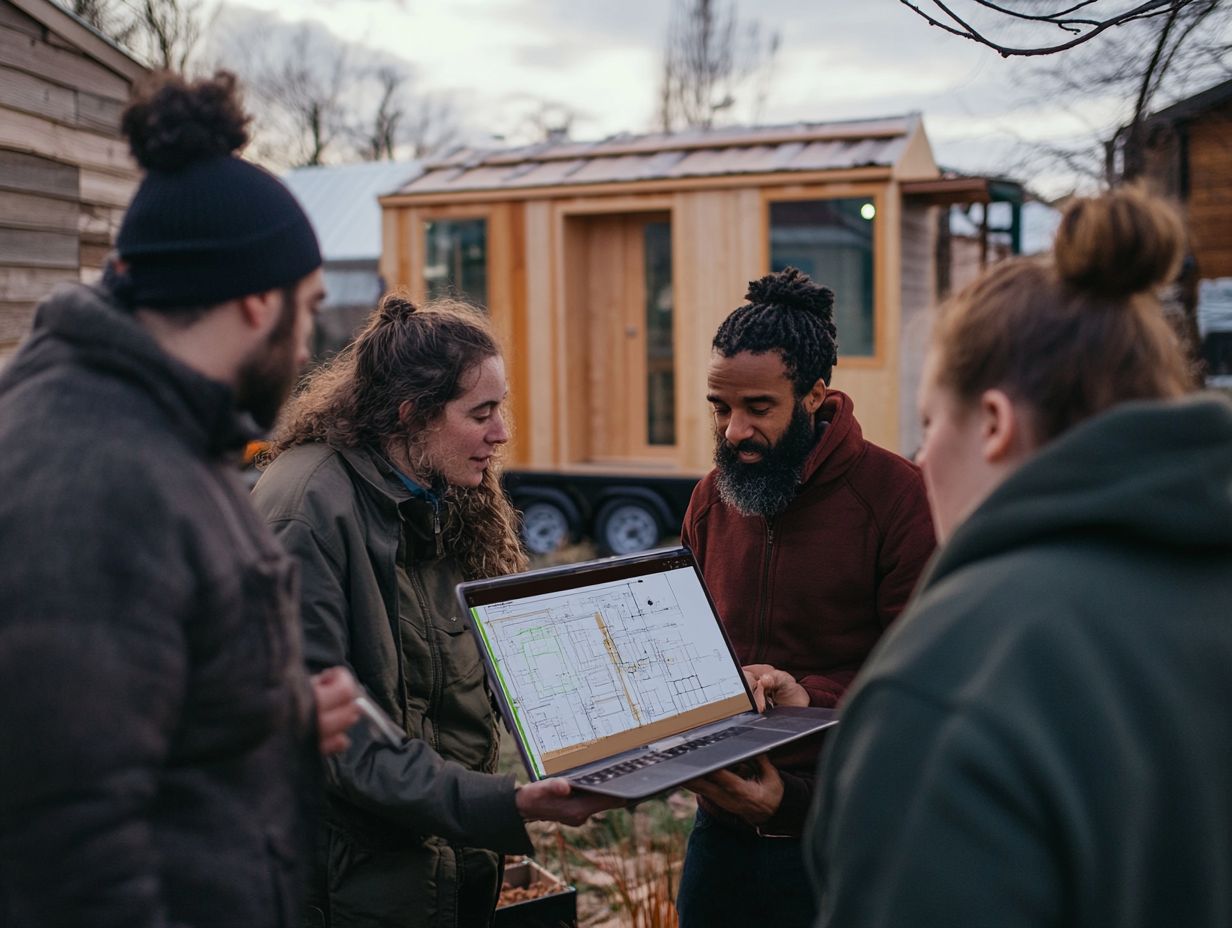
- A Tiny House Community is a collection of small homes with shared amenities, designed for sustainable and affordable living.
- The permitting process for Tiny House Communities involves understanding zoning laws, obtaining necessary permits, and overcoming common issues and challenges.
- To ensure a successful permitting process, utilize key strategies and resources, such as hiring a professional consultant and staying updated on local regulations.
Overview of Tiny House Communities
Tiny house communities are blossoming across the United States, presenting a distinctive fusion of compact living and shared resources that perfectly aligns with the rising tiny house movement.
These communities, from eco-friendly developments like Eden Village to the cutting-edge designs of Great Lakes Tiny Homes, champion a sustainable lifestyle while adhering to local regulations established by authorities.
As zoning requirements and building codes adjust to embrace this lifestyle, these communities are redefining the future of home ownership making it both affordable and environmentally conscious.
What are Tiny House Communities?
Tiny house communities present an intriguing blend of small, efficient homes designed to embody a minimalist lifestyle while nurturing a strong sense of community among residents.
These enclaves typically feature homes ranging from 100 to 400 square feet, showcasing innovative designs that maximize both space and functionality. The layout encourages interaction among neighbors, often incorporating communal areas where you can gather for social events or shared activities.
Many of these developments include transitional structures like shared kitchens and bathrooms, which not only help minimize costs but also foster a spirit of cooperation.
Residents often engage in microbusiness ventures, from artisan crafts to organic farming, creating a vibrant local economy that enables individuals and enriches the community as a whole.
Benefits of Living in a Tiny House Community
Living in a tiny house community presents a wealth of advantages, such as financial savings, a smaller environmental footprint, and an enriched sense of community among residents.
These communities not only provide an affordable housing solution but also foster a sustainable lifestyle that resonates with the principles of minimalism and efficient living.
By sharing resources and actively participating in community development, you can experience an elevated quality of life while skillfully managing the challenges that come with property ownership and property taxes associated with tiny home living.
Discover your perfect tiny home today and join this exciting movement!
Affordability and Sustainability
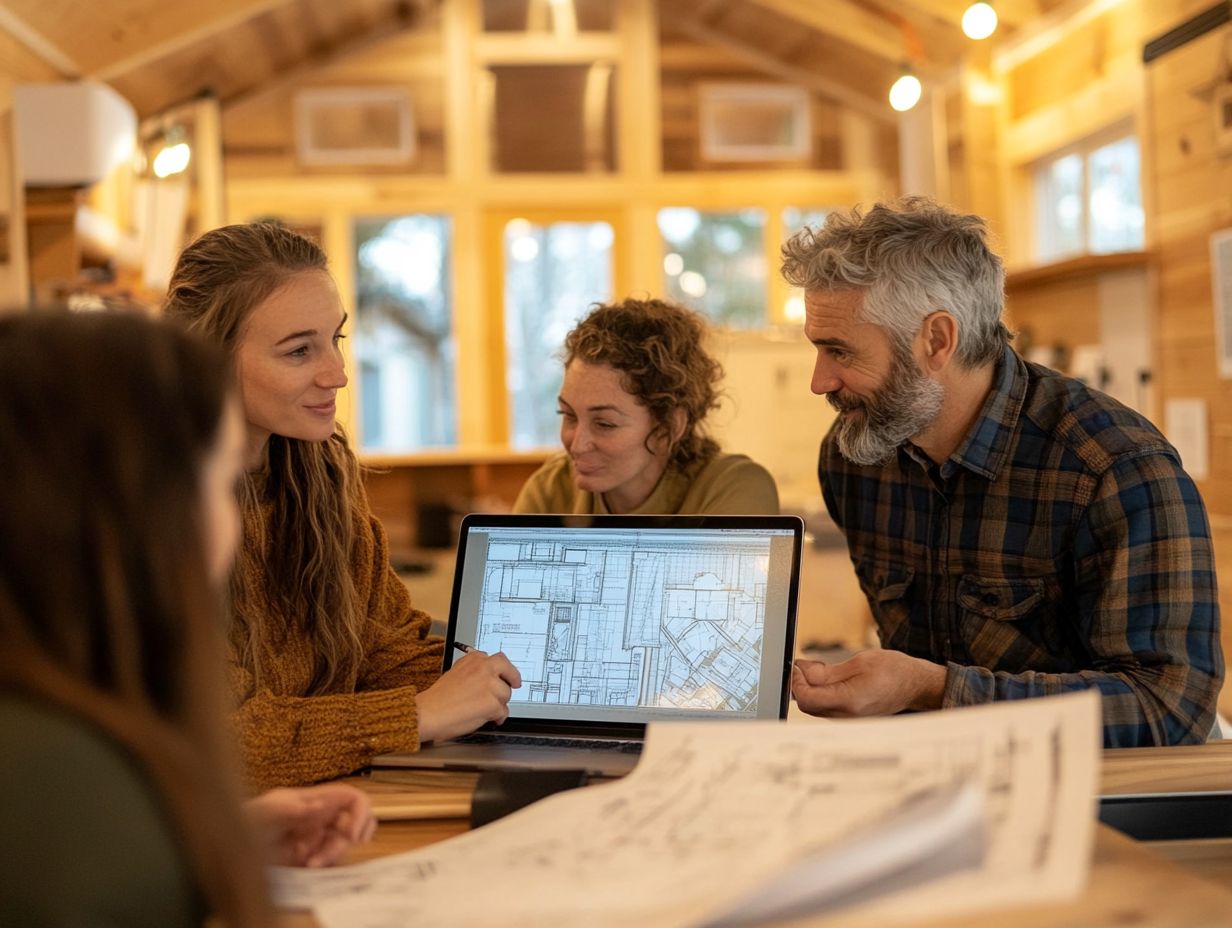
Affordability and sustainability are among the most compelling reasons to consider living in tiny house communities. Tiny house prices typically lead to significantly lower costs for homeownership and everyday living expenses.
By opting for these compact living spaces, you can enjoy considerable reductions in property taxes and maintenance costs. This shift eases your financial burden and encourages you to embrace eco-friendly practices, like using renewable energy sources and minimizing waste.
The appeal of reduced monthly expenses and a desire for a simpler, more intentional lifestyle has fueled growing interest in affordable housing options. Tiny house communities are not just a passing trend; they represent a burgeoning movement toward sustainable living and financial freedom.
Permitting Process for Tiny House Communities
Navigating the permitting process for tiny house communities can be challenging but rewarding! It often requires a thorough understanding of zoning rules and building codes that vary by locality.
Familiarize yourself with the regulations set forth by the local building department, along with the rules you need to follow from state and federal authorities.
Understanding Zoning Rules and Regulations
Understanding zoning rules and regulations is essential when establishing tiny house communities. These legal frameworks dictate where your tiny houses can be placed, whether as permanent fixtures or temporary dwellings.
These rules often specify the exact dimensions, utilities, and sanitation standards you must follow. These requirements can vary significantly from one locality to another.
In many areas, residential zoning may impose strict regulations that categorize tiny houses as accessory dwellings or even portable structures. This complicates creating a cohesive community and raises questions about the future of tiny house communities.
Compliance is critical, influencing how well tiny homes integrate into existing neighborhoods and the overall viability of your community. Local authorities may require you to follow building codes, setback requirements, and obtain permissions for using land for unconventional living arrangements. All of this shapes the character and sustainability of tiny house communities, as detailed in understanding the dynamics of tiny house communities.
Obtaining Necessary Permits
Obtaining the necessary permits for tiny house communities requires deft navigation of a complex landscape of building codes and local regulations.
Your journey typically begins with investigating local zoning rules to confirm whether tiny houses are allowed in your chosen area. Some regions impose stringent rules on minimum dwelling sizes.
You ll likely need to secure specific building and land-use permits, including those for electrical, plumbing, and wastewater systems. Meticulous documentation is essential; this often includes site plans, architectural designs, and a detailed narrative outlining the project s purpose.
Be prepared for potential challenges, such as community opposition or the need for environmental impact assessments, which can complicate the approval process. Familiarizing yourself with these expectations can significantly streamline your path to necessary approvals.
Challenges and Roadblocks in the Permitting Process
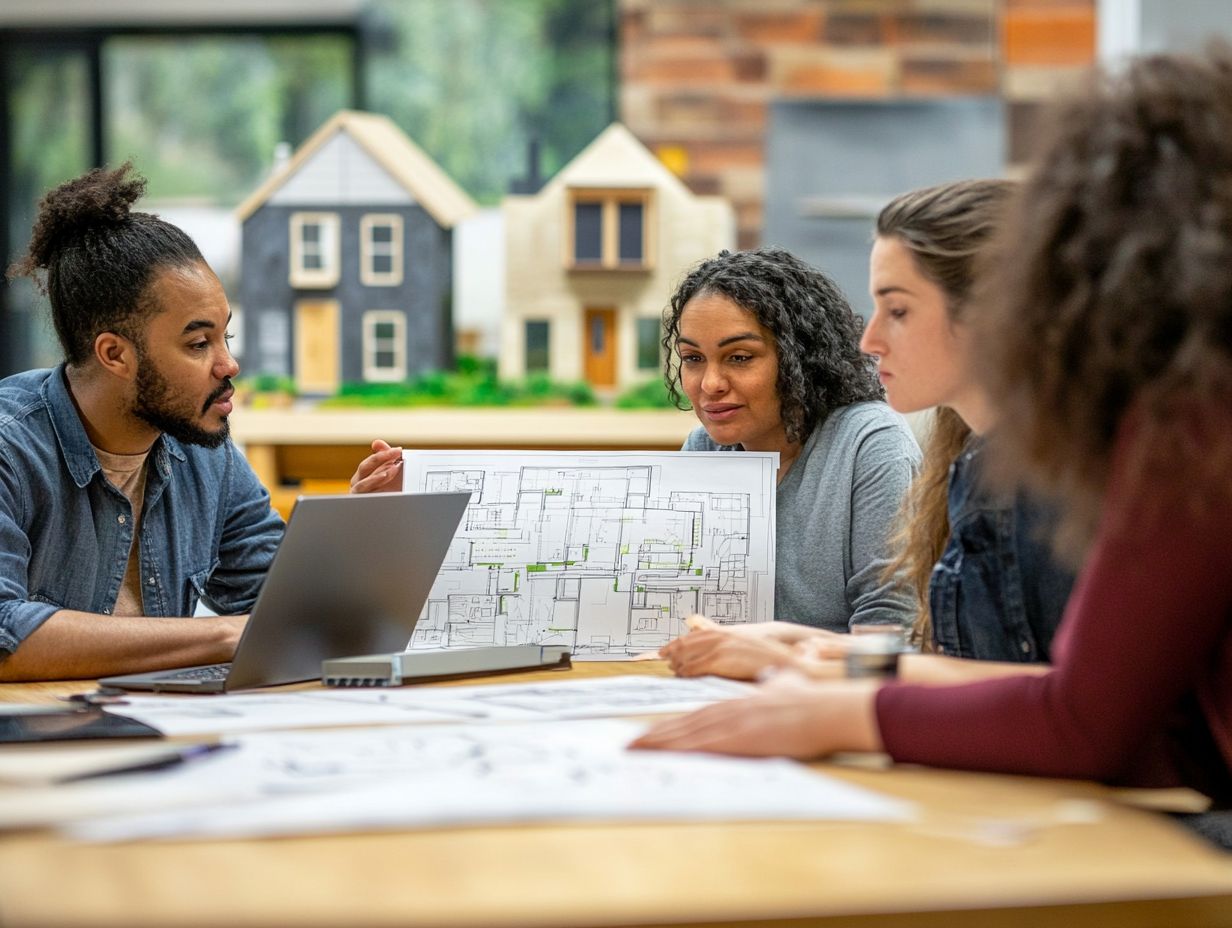
Even with the rising allure of tiny house communities, numerous challenges and obstacles linger in the permitting process. These often arise from outdated building codes, inconsistent local regulations, and the compliance demands set forth by local authorities.
With the right preparation and knowledge, you can overcome these challenges and work toward establishing successful tiny house communities.
Ready to start your tiny house journey? Understanding the permitting process is your first step toward your dream home!
Common Issues and How to Overcome Them
Common issues in the permitting process for tiny house communities often revolve around navigating difficult rules to follow and tackling local regulations that may not align with modern construction standards.
These challenges can lead to delays. They can also increase costs for builders focused on creating innovative and efficient living spaces. Outdated zoning laws might classify tiny homes as recreational vehicles rather than long-term homes, making it difficult to secure the necessary permits. For more insights, explore the evolution of tiny house communities.
To overcome these obstacles, you can advocate for updated legislation that reflects today s housing needs and trends. Engaging with local governments to foster meaningful dialogue about adjusting regulations can pave the way for clearer compliance requirements. This allows your tiny house projects to flourish.
Join forces with other builders. Together, you can push for the changes needed in this evolving landscape.
Tips for a Successful Permitting Process
Ready for a smooth permitting process for your tiny house community? It s crucial to implement key strategies and leverage available resources while engaging thoughtfully with local authorities.
Key Strategies and Resources
Key strategies for a successful permitting process include understanding local building department requirements, navigating tiny house permits, leveraging resources tailored for tiny house builders, and engaging with the community to cultivate support.
By thoroughly researching zoning laws and regulations specific to your area, you can navigate the complexities of the permitting landscape with greater ease. Collaborating with local officials and attending community meetings not only clarifies expectations but also helps you establish a positive rapport that can be invaluable.
Using online resources like forums and support groups dedicated to tiny living can offer valuable insights and showcase examples of successful projects. Involving future residents in discussions about design and amenities allows you to address community concerns and foster a sense of ownership. This ultimately smooths the path to securing those all-important permits, especially within the culture of tiny house communities.
Frequently Asked Questions
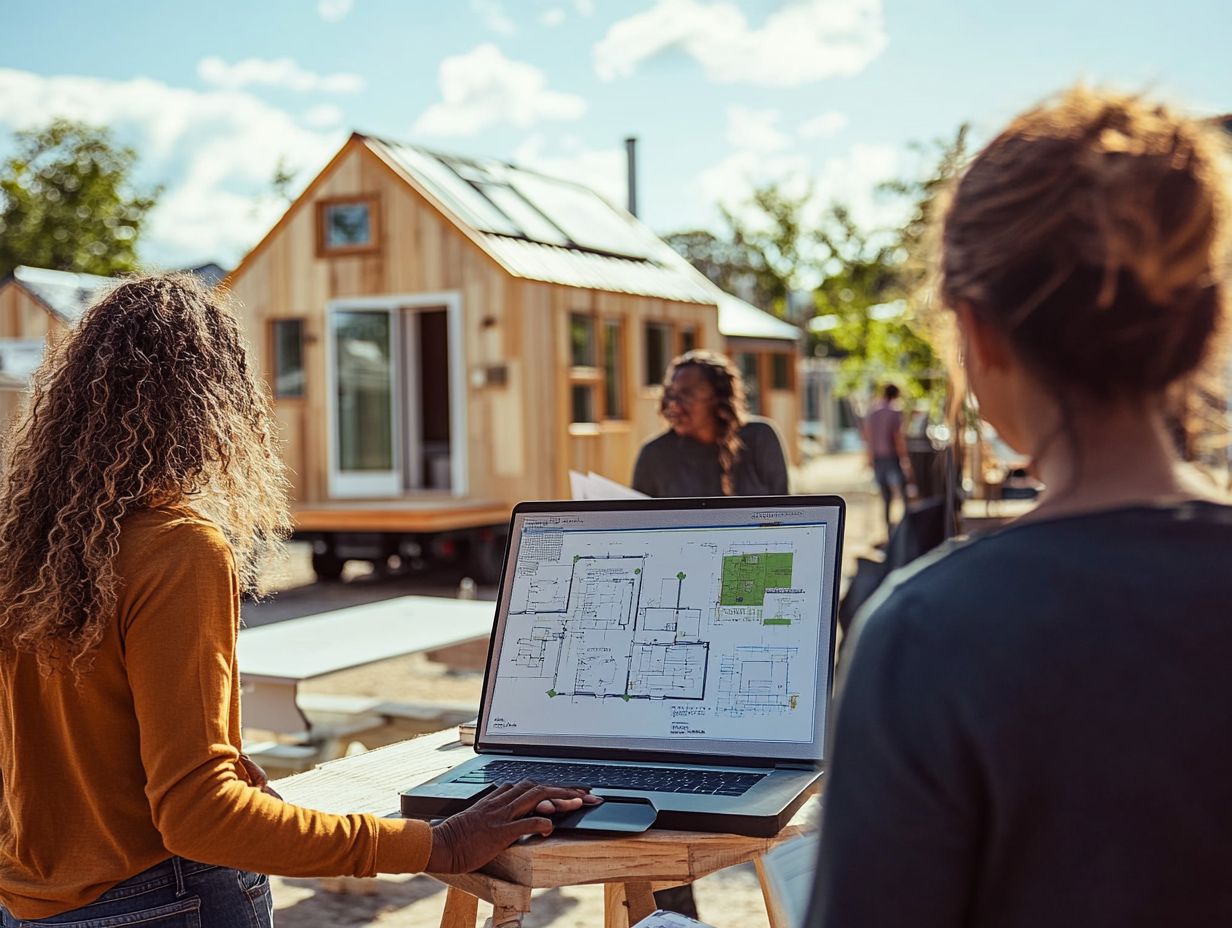
Curious about the permitting process for tiny house communities?
The permitting process for tiny house communities involves obtaining the necessary approvals and permits from local government and local authorities and zoning departments, considering building codes and zoning requirements.
What permits are typically required for a tiny house community?
The specific permits required for a tiny house community may vary depending on location, but typically include a building permit, zoning permit, and possibly a special use or conditional use permit. All of these must comply with local building department standards.
Are there any specific regulations for tiny house communities?
Yes, there may be specific regulations and codes, including construction standards and foundation rules. These apply to tiny house communities, such as minimum square footage requirements, maximum number of units allowed, and utility hookup regulations.
What is the timeline for obtaining permits for a tiny house community?
The timeline for obtaining permits for a tiny house community can vary depending on the location, specific requirements, and local regulations. Typically, it takes several months to a year to complete the permitting process.
Can I build a tiny house community on any type of land?
No, the land where a tiny house community is being built must be zoned appropriately for that type of use. It is important to research and confirm the residential zoning regulations before beginning the permitting process.
Do I need to hire a professional to assist with the permitting process?
While it is not required, it is highly recommended to hire a professional such as a land use planner or architect. They should be familiar with Missouri laws or Kansas counties to assist with the permitting process for a tiny house community. They can help navigate the regulations, including legalities of tiny houses, and ensure all necessary permits are obtained.


